
- Subject:
- Applied Science
- Biology
- Life Science
- Material Type:
- Module
- Author:
- OpenStax College
- Date Added:
- 07/18/2021

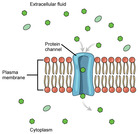
By the end of this section, you will be able to:Explain why and how passive transport occursUnderstand the processes of osmosis and diffusionDefine tonicity and describe its relevance to passive transport
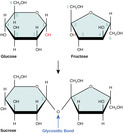
By the end of this section, you will be able to:Discuss the role of carbohydrates in cells and in the extracellular materials of animals and plantsExplain the classifications of carbohydratesList common monosaccharides, disaccharides, and polysaccharides


By the end of this section, you will be able to:Describe the four major types of lipidsExplain the role of fats in storing energyDifferentiate between saturated and unsaturated fatty acidsDescribe phospholipids and their role in cellsDefine the basic structure of a steroid and some functions of steroidsExplain the how cholesterol helps to maintain the fluid nature of the plasma membrane

By the end of this section, you will be able to:Describe the structure of nucleic acids and define the two types of nucleic acidsExplain the structure and role of DNAExplain the structure and roles of RNA
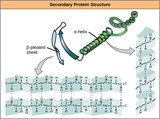
By the end of this section, you will be able to:Describe the functions proteins perform in the cell and in tissuesDiscuss the relationship between amino acids and proteinsExplain the four levels of protein organizationDescribe the ways in which protein shape and function are linked

By the end of this section, you will be able to:Understand the synthesis of macromoleculesExplain dehydration (or condensation) and hydrolysis reactions

By the end of this section, you will be able to:Define matter and elementsDescribe the interrelationship between protons, neutrons, and electronsCompare the ways in which electrons can be donated or shared between atomsExplain the ways in which naturally occurring elements combine to create molecules, cells, tissues, organ systems, and organisms

By the end of this section, you will be able to:Explain why carbon is important for lifeDescribe the role of functional groups in biological molecules


By the end of this section, you will be able to:Describe the properties of water that are critical to maintaining lifeExplain why water is an excellent solventProvide examples of water’s cohesive and adhesive propertiesDiscuss the role of acids, bases, and buffers in homeostasis

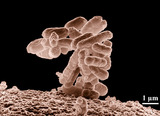
By the end of this section, you will be able to:Identify the shared characteristics of the natural sciencesSummarize the steps of the scientific methodCompare inductive reasoning with deductive reasoningDescribe the goals of basic science and applied science

By the end of this section, you will be able to:Identify and describe the properties of lifeDescribe the levels of organization among living thingsRecognize and interpret a phylogenetic treeList examples of different sub disciplines in biology
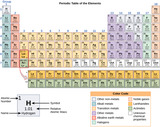
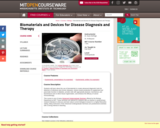
Students will learn about the use of biomaterials to create advanced diagnostic tools for detection of infectious and chronic diseases, restore insulin production to supplement lost pancreatic function in diabetes, provide cells with appropriate physical, mechanical, and biochemical cues to direct tissue regeneration, and enhance the efficacy of cancer immunotherapy.
This course is one of many Advanced Undergraduate Seminars offered by the Biology Department at MIT. These seminars are tailored for students with an interest in using primary research literature to discuss and learn about current biological research in a highly interactive setting. Many instructors of the Advanced Undergraduate Seminars are postdoctoral scientists with a strong interest in teaching.
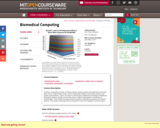
Analyzes computational needs of clinical medicine reviews systems and approaches that have been used to support those needs, and the relationship between clinical data and gene and protein measurements. Topics: the nature of clinical data; architecture and design of healthcare information systems; privacy and security issues; medical expertsystems; introduction to bioinformatics. Case studies and guest lectures describe contemporary systems and research projects. Term project using large clinical and genomic data sets integrates classroom topics.
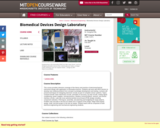
This course provides intensive coverage of the theory and practice of electromechanical instrument design with application to biomedical devices. Students will work with MGH doctors to develop new medical products from concept to prototype development and testing. Lectures will present techniques for designing electronic circuits as part of complete sensor systems. Topics covered include: basic electronics circuits, principles of accuracy, op amp circuits, analog signal conditioning, power supplies, microprocessors, wireless communications, sensors, and sensor interface circuits. Labs will cover practical printed circuit board (PCB) design including component selection, PCB layout, assembly, and planning and budgeting for large projects. Problem sets and labs in the first six weeks are in support of the project. Major team-based design, build, and test project in the last six weeks. Student teams will be composed of both electrical engineering and mechanical engineering students.
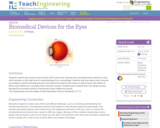
Students examine the structure and function of the human eye, learning some amazing features about our eyes, which provide us with sight and an understanding of our surroundings. Students also learn about some common eye problems and the biomedical devices and medical procedures that resolve or help to lessen the effects of these vision deficiencies, including vision correction surgery.